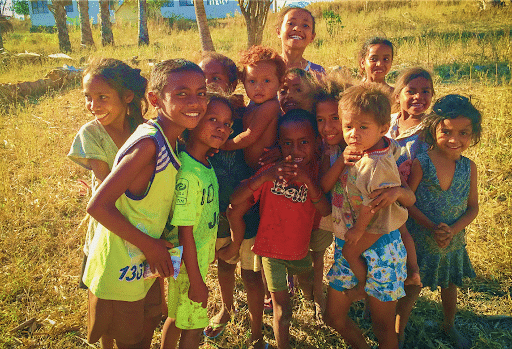
Sustaining high vaccination coverage against priority diseases by leveraging DHIS2 data in Timor-Leste
The Ministry of Health in Timor-Leste conducted a nationwide Supplementary Immunization Activity in record time using DHIS2, raising the national vaccination coverage rate from 86% to 95%
In January 2023, the Ministry of Health (MoH) in Timor-Leste conducted Supplementary Immunization Activities (SIAs) to ensure improved public health and reduced incidences of vaccine-preventable diseases. The SIAs targeted priority antigens including Measles-Rubella (MR), Oral Polio (OPV), Pneumococcal (PCV), Vitamin A supplements, deworming (Albendazole) tablets for children below 5 years, and COVID-19 vaccines for those above 12 years. This campaign, which was supported by the WHO Timor-Leste country office and UNICEF, used the Timor-Leste Health Information System (TLHIS), the DHIS2-based national HMIS, for planning, implementation and evaluation. Customization and development of the system was done with technical support from WHO and implementation was supported by the National Directorate of Statistics. In the planning phase of the exercise, the team used existing EPI data in DHIS2 for needs mapping, including identifying the target population and areas where vaccination coverage was low so that resources can be targeted. Additionally, detailed operational guides as well as separate one-page data entry guides were developed for the campaign in English and Tetum, the local language. This was followed by extensive training for the implementing staff at the national and sub-national levels. Training-of-Trainers was also conducted for national-level data entry, validation, monitoring and analysis team members to enable them to provide better guidance to sub-national level implementation teams.
The campaign was remarkably successful and achieved its mandate of 95% coverage throughout the country in one month, which local stakeholders described as “record time.” Through innovative data collection, analysis and visualization facilitated by DHIS2, Timor-Leste’s healthcare teams closely monitored commodity management, ensuring no reported case of stock-out throughout the campaign. The team also relied on accurate daily data visualized in DHIS2 dashboards to extend the campaign where necessary, reaching the target populations even in remote areas while also effectively managing all reported cases of Adverse Effects Following Immunization (AEFI) to retain public confidence in the campaign.
Adaptive data-driven implementation within a structured organizational unit system
Historically, Timor-Leste has maintained high vaccine coverage rates for priority diseases. A 2022 revision of immunization coverage in the country, conducted by the WHO and UNICEF estimated an average coverage rate of 86% for a range of antigens including BCG, DTP, OPV, IPV and HepB. This figure is despite the disruption of routine immunization activities in the country for two years following the COVID outbreak. The SIA campaign, therefore, was aimed at bridging the gap caused by the disruptions to health services during the pandemic.

The success of the SIA campaign in Timor-Leste can be largely attributed to meticulous planning and data-driven implementation. The MoH established a detailed hierarchy for vaccine/commodity supply chain and data transmission. The implementation team then earmarked vaccination posts in designated locations, public/private health facilities, health posts and community centers closest to the populations. A clear channel of data reporting was established from the vaccination posts to the health posts and subsequently, the next higher organizational unit structure located within the sub-district Community Health Centers (CHCs).
The data capture form for each vaccination post was used to collect data for a range of data sets including the number of vaccines given, adverse drug reactions, and stock information. The data was, in turn, used for internal stock validations, coverage rates estimation and planning.
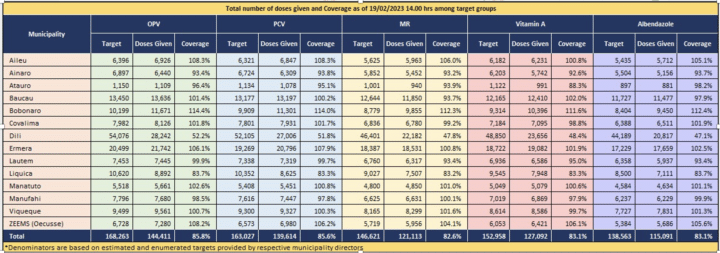
During the campaign, daily aggregate reports, generated manually in Excel sheets from each vaccine post, were collated at the health posts and sent to the assigned CHCs at the end of each day’s activities. The deadline for the submission of each day’s reports from the vaccination posts to the CHCs was set at 10am the next day. These reports were in turn, meticulously reviewed by the HMIS officers at the health centers before they were entered into a module created in the DHIS2-based national HMIS for the SIA campaign. Direct data entry from the vaccination posts was not feasible because of unreliable internet connectivity, especially in remote health posts where there may be no connectivity at all. Though the data was entered into DHIS2 at the CHCs, they were recorded under the individual health posts in the organizational unit structure to allow for granular analysis.
Once entered in DHIS2, the data is aggregated upward to the central level through the national HMIS and visualized in dashboards accessible to managers and team members at the national and district levels. Built-in validation rules, trend analysis and outlier detection helped to improve data accuracy. For each vaccine, some of the visualized data included the coverage and reporting rates, cumulative reporting rate, target line and coverage line graphs to keep track of the team performance on a daily basis. At the sub-district levels, health and vaccination posts, where limited internet connectivity prevents access to the dashboards, images of relevant charts and reports from the DHIS2 as well as the charts created in Excel, were shared with the municipal focal persons, HMIS officers and field officers via WhatsApp. By doing so, the total number of stakeholders who had access to the daily infographics for decision-making came to about 5000. This practice kept the whole team in the loop and informed about the progress in their respective areas of responsibility, encouraging a healthy rivalry whereby districts competed to be in the top three highest daily coverage rates, resulting in a high vaccination coverage overall.
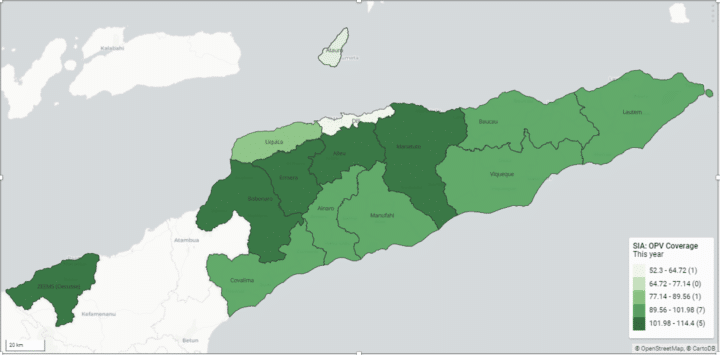
The data also provided real-time insights, facilitating prompt actions to address Adverse Events Following Immunization (AEFI) and ensuring necessary assistance reached those in need, enhancing vaccine uptake and community trust. There were 7 reported cases of AEFIs during the campaign. As the cases were recorded, the data was shared with immunization consultants attached to each district in support of the exercise. Using DHIS2 data and feedback from the consultants, the MoH was able to take necessary prompt actions to address these cases. In one particular case, speedy data reporting facilitated by DHIS2 helped the campaign managers provide prompt assistance to a child who suffered an AEFI and had important pre-existing conditions/co-morbidities, thereby avoiding an outcome that could have reduced vaccine uptake in the affected community.
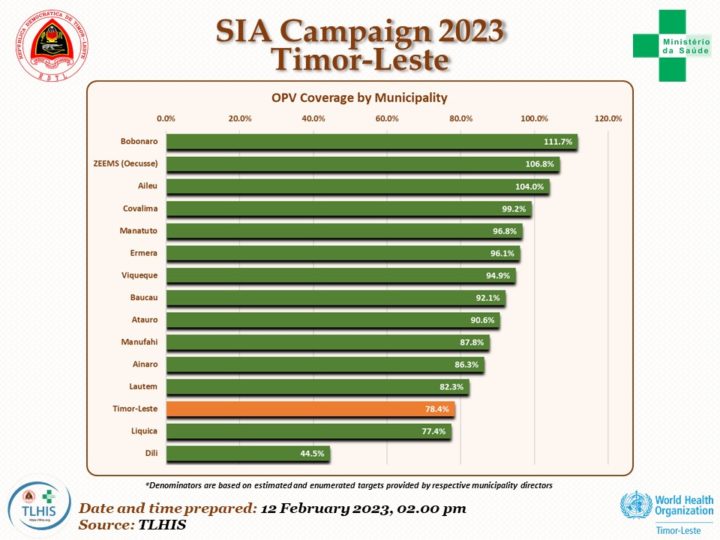
Post-campaign evaluation: Collaborative review for systems strengthening
After the successful conduct of the SIA in February 2023, a team of examiners from the MoH, the National Statistics Directorate and other stakeholders began a post-campaign evaluation of the processes with the view to assessing different aspects of the campaign against established targets. Some of the specific activities conducted as part of the post-campaign evaluation included the Rapid Convenience Assessment (RCA), data audit, coverage survey and data triangulation.
Rapid Convenience Assessment (RCA) is a tool used by examiners to assess the coverage of the vaccination campaign. This was administered house-to-house and the information collected was used to plan and conduct mop-up vaccination activities to ensure that all children were reached with required vaccines. This tool was built into the DHIS2 system, enabling some of the examiners to use mobile devices during the RCA while others used paper-based forms to access areas with limited internet connectivity.
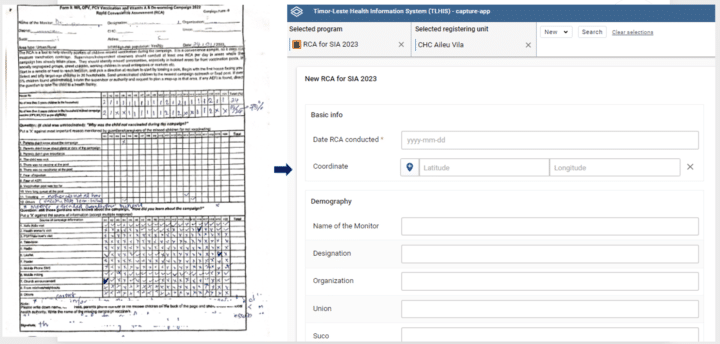
Furthermore, the campaign was followed by a data audit carried out by the HMIS officers using a separate tool which also contained EPI and campaign data. The tool is used to check for data entry, aggregation and transcription errors in the manual data from the vaccination posts to the health posts. The team created an event-based report in DHIS2 to do the evaluation online, though most of the officers used the manual method instead. The data audit involved the assessment of SIA and EPI data for completeness and accuracy, as well as review of the systems for transfer, aggregation and validation errors. All identified errors were corrected by the HMIS officers to further improve data quality. Additionally, the team took the opportunity to access the facilities and reported important findings to the national healthcare leadership.
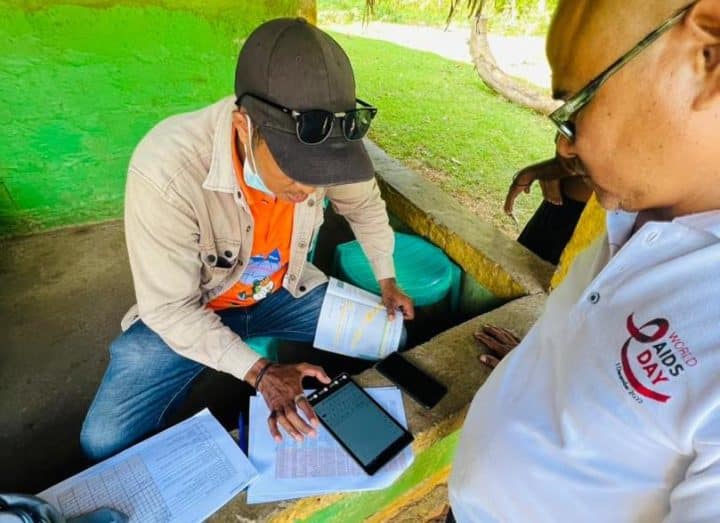
Finally, between March and April, a coverage survey was conducted for EPI and SIAs by analyzing a representative sample of vaccinated households using DHIS2. Examiners and data collectors were given mobile devices/tablets which they used to conduct a house-to-house survey of the selected households by administering the questionnaire. This was the first instance where an immunization coverage survey was conducted fully digitally in Timor- Leste. The coverage survey team was bolstered by members of the National Statistics Directorate who had just completed a national census and therefore, had experience with capturing survey data using mobile devices. With the SIA and EPI coverage data, and relevant household demographics now available in the national DHIS2-based HMIS, data triangulation for better insights are now easier and can aid further health protection decisions in Timor-Leste.


